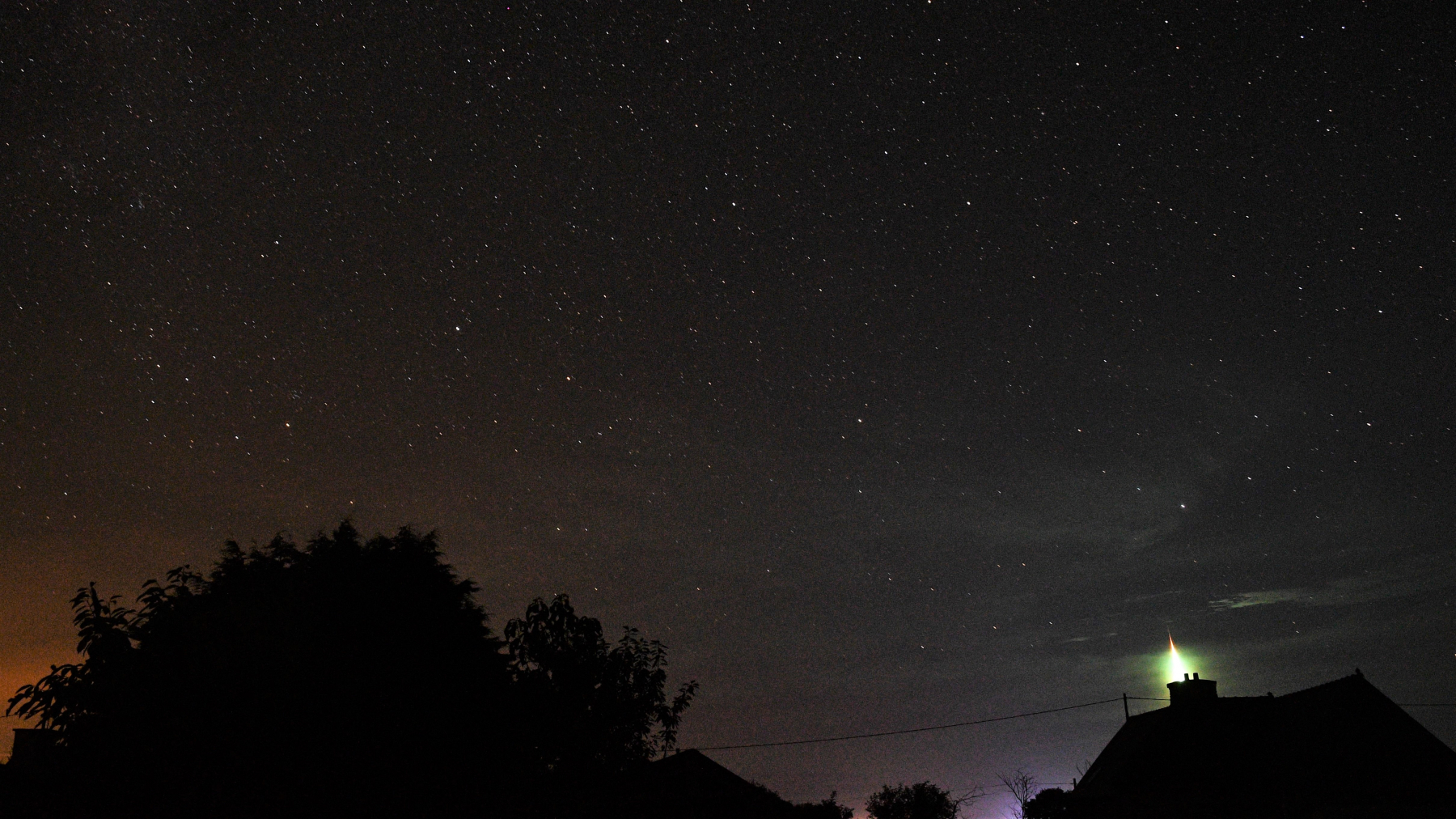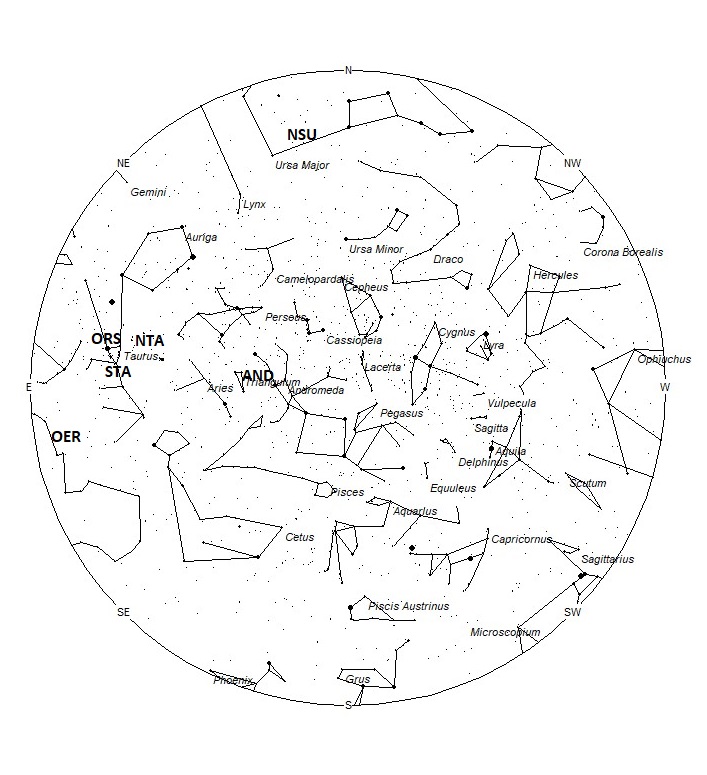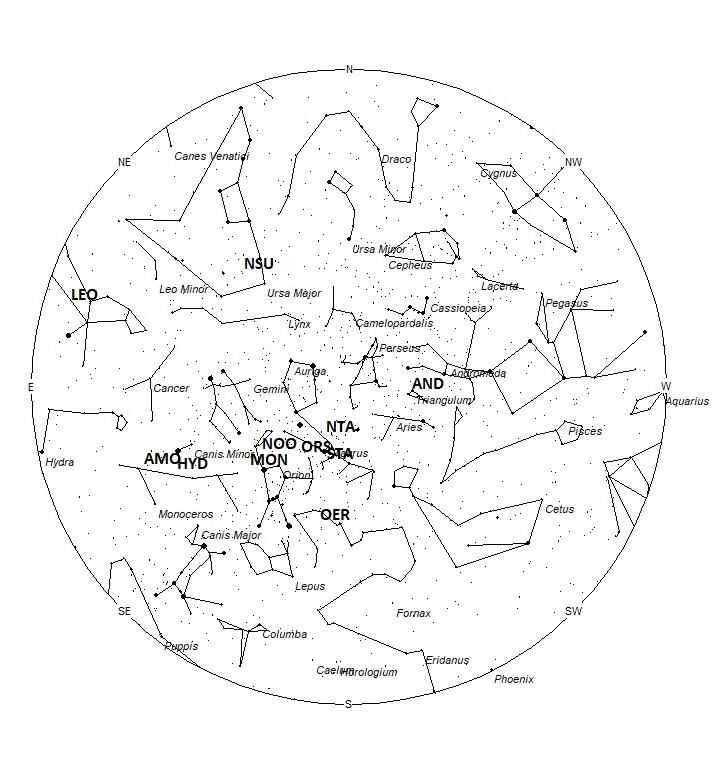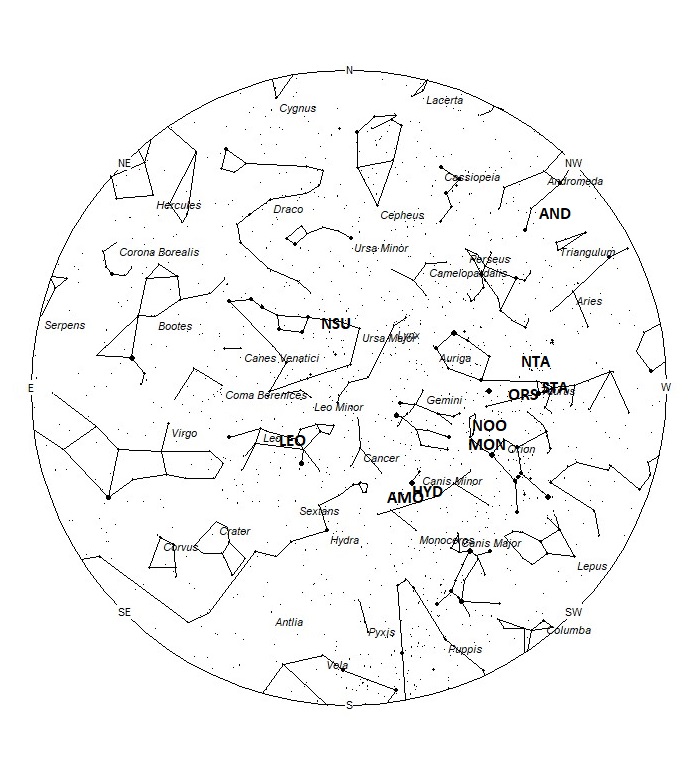 Pascal Ricart captured this fireball illuminating the sky behind the chimney on the house in the foreground. This fireball occurred on 12 August 2021 at 02:10 CEST (00:10UT), from Pleudaniel, France. ©Pascal Ricart
Pascal Ricart captured this fireball illuminating the sky behind the chimney on the house in the foreground. This fireball occurred on 12 August 2021 at 02:10 CEST (00:10UT), from Pleudaniel, France. ©Pascal RicartDuring this period, the moon wanes from nearly full to just over half illuminated. This is the worst time of the month to try and view meteor activity as the more active morning hours are completely saturated by moonlight. If one has patience, you can try viewing during the evening hours between dusk and moonrise. Rates at this time will be less than 5 meteors per hour no matter your location. The estimated total hourly meteor rates for evening observers this week is near 3 as seen from mid-northern latitudes (45N) and 2 as seen from tropical southern locations (25S). For morning observers, the estimated total hourly rates should be near 8 as seen from mid-northern latitudes (45N) and 5 as seen from tropical southern locations (25S). The actual rates will also depend on factors such as personal light and motion perception, local weather conditions, alertness, and experience in watching meteor activity. Rates during this period are reduced due to moonlight. Note that the hourly rates listed below are estimates as viewed from dark sky sites away from urban light sources. Observers viewing from urban areas will see less activity as only the brighter meteors will be visible from such locations.
The radiant (the area of the sky where meteors appear to shoot from) positions and rates listed below are exact for Saturday night/Sunday morning November 20/21. These positions do not change greatly day to day so the listed coordinates may be used during this entire period. Most star atlases (available at science stores and planetariums) will provide maps with grid lines of the celestial coordinates so that you may find out exactly where these positions are located in the sky. I have also included charts of the sky that display the radiant positions for evening, midnight, and morning. The center of each chart is the sky directly overhead at the appropriate hour. These charts are oriented for facing south but can be used for any direction by rotating the charts to the desired direction. A planisphere or computer planetarium program is also useful in showing the sky at any time of night on any date of the year. Activity from each radiant is best seen when it is positioned highest in the sky, either due north or south along the meridian, depending on your latitude. It must be remembered that meteor activity is rarely seen at the radiant position. Rather they shoot outwards from the radiant, so it is best to center your field of view so that the radiant lies at the edge and not the center. Viewing there will allow you to easily trace the path of each meteor back to the radiant (if it is a shower member) or in another direction if it is sporadic. Meteor activity is not seen from radiants that are located far below the horizon. The positions below are listed in a west to east manner in order of right ascension (celestial longitude). The positions listed first are located further west therefore are accessible earlier in the night while those listed further down the list rise later in the night.
These sources of meteoric activity are expected to be active this week.
Details of each source will continue next week when viewing conditions are more favorable.
You can keep track of the activity of these meteor showers as well as those beyond the limits of visual observing by visiting the NASA Meteor Shower Portal available at: https://meteorshowers.seti.org/ You can move the sky globe to see different areas of the sky. Colored dots indicate shower meteors while white dots indicate sporadic (random) activity. The large orange disk indicates the position of the sun so little activity will be seen in that area of the sky.
| SHOWER | DATE OF MAXIMUM ACTIVITY | CELESTIAL POSITION | ENTRY VELOCITY | CULMINATION | HOURLY RATE | CLASS |
| RA (RA in Deg.) DEC | Km/Sec | Local Standard Time | North-South | |||
| Andromedids (AND) | Nov 06 | 01:37 (024) +38 | 15 | 22:00 | <1 – <1 | IV |
| Southern Taurids (STA) | Nov 05 | 04:08 (062) +15 | 24 | 01:00 | 1 – <1 | II |
| omicron Eridanids (OER) | Nov 13 | 04:16 (064) -02 | 27 | 01:00 | <1 – <1 | IV |
| Northern Taurids (NTA) | Nov 12 | 04:23 (066) +24 | 27 | 01:00 | 2 – 1 | II |
| Southern chi Orionids (ORS) | Dec 02 | 04:40 (070) +17 | 28 | 01:00 | <1 – <1 | IV |
| November Orionids (NOO) | Nov 30 | 05:40 (085) +16 | 44 | 02:00 | <1 – <1 | II |
| Monocerotids (MON) | Dec 11 | 05:50 (087) +11 | 45 | 02:00 | <1 – <1 | II |
| sigma Hydrids (HYD) | Dec 07 | 07:23 (111) +06 | 60 | 04:00 | <1 – <1 | II |
| alpha Monocerotids (AMO) | Nov 22 | 07:48 (117) +01 | 62 | 04:00 | <1 – <1 | III |
| Orionids (ORI) | Oct 21 | 07:55 (119) +16 | 64 | 04:00 | <1 – <1 | I |
| Nov. sigma Ursae Majorids (NSU) | Nov 24 | 09:40 (145) +60 | 53 | 06:00 | <1 – <1 | IV |
| Leonids (LEO) | Nov 18 | 10:24 (156) +20 | 70 | 07:00 | 2 – 1 | I |
 American Meteor Society
American Meteor Society



I believe I just saw a mediorite here in hockessin Delaware about 10 minutes ago